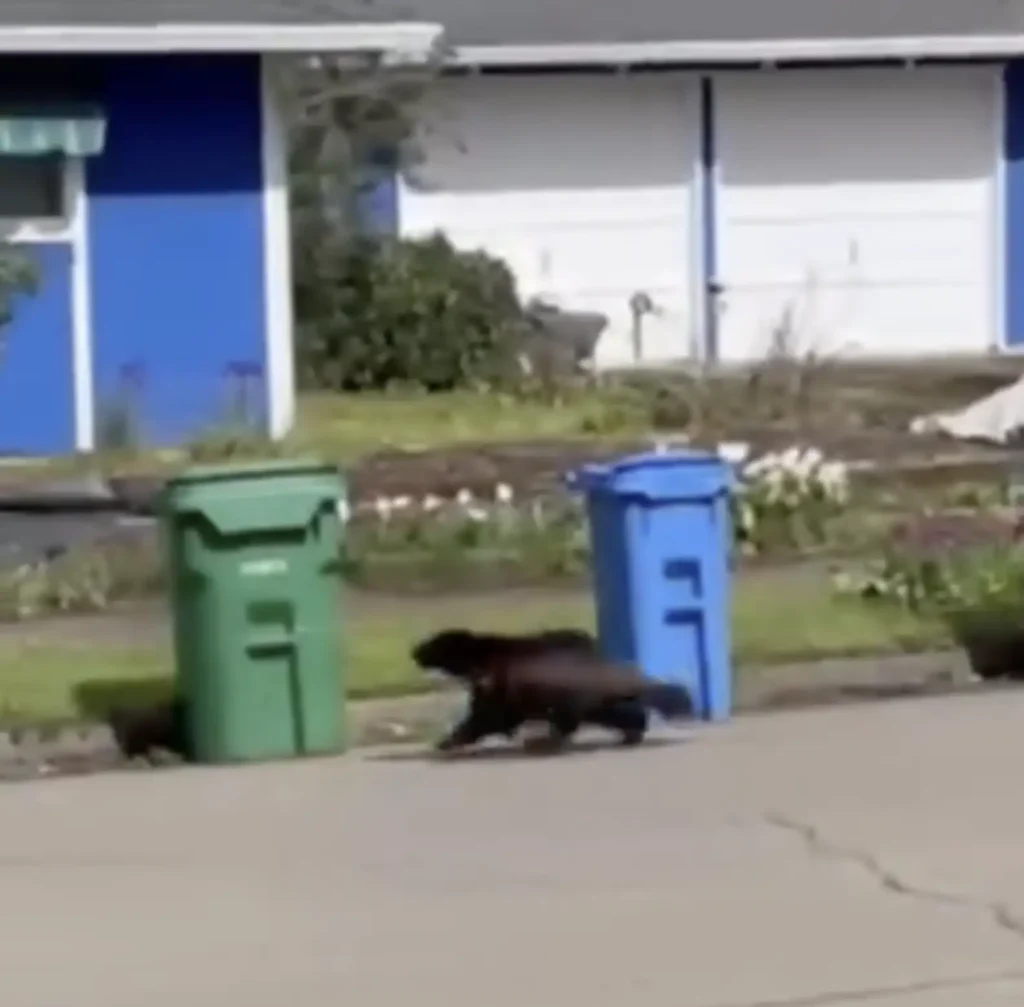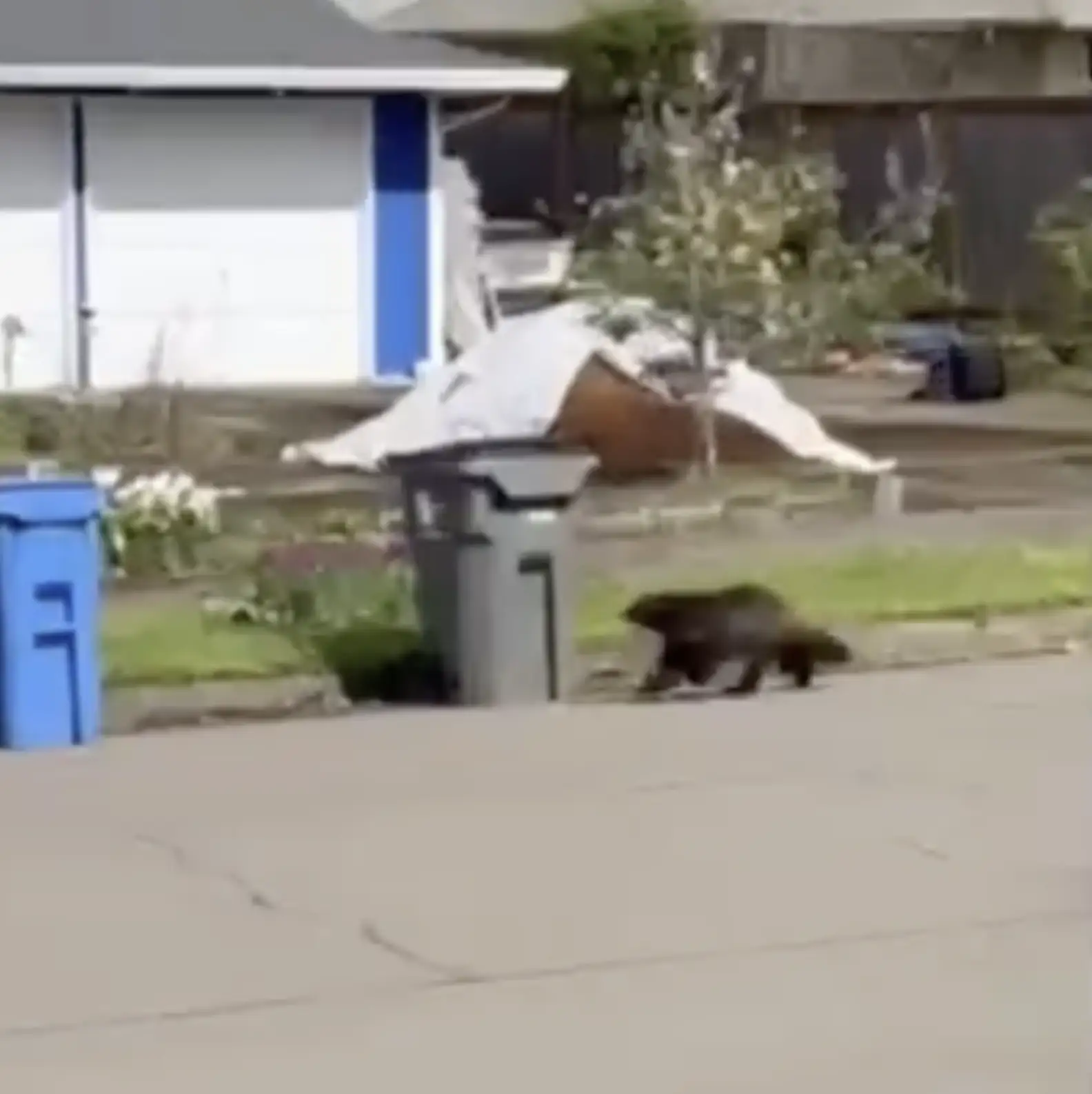One early afternoon this past April, Willie Gonia, a resident of Eugene, Oregon, caught sight of a blur of fur darting past his window.
“I noticed something out of the corner of my eye and rushed outside to get a better look,” Gonia recounted to The Dodo. “It zipped by, but fortunately, it turned around and came back my way.”
This time, Gonia was prepared, camera in hand. As he filmed the mysterious visitor racing down the street, he quickly realized who—or what—he was looking at. “In an instant, I knew it wasn’t a bear; it was a wolverine,” he said. “I had only ever seen one on wildlife shows before.”

It’s no wonder Gonia had only encountered wolverines on television, as these short, muscular mammals are becoming increasingly rare. “It is extremely uncommon to spot a wolverine anywhere, let alone in an urban or suburban area,” said Bethany Cotton, the conservation director for Cascadia Wildlands. “The population of wolverines in the contiguous U.S. is estimated to be fewer than 300, so having one in a city, even for just a few hours, is exceedingly rare.”
According to Cotton, wolverines are family-oriented and shy creatures, capable of navigating steep, snowy terrains and covering vast distances in a short time. These vulnerable animals are protected under the federal Endangered Species Act.
“Wolverines are scavengers, playing a crucial role in the ecosystem by recycling nutrients,” Cotton explained. “Their dependence on late, deep spring snowpack for denning and raising young makes them particularly vulnerable to climate change, which is why they serve as an indicator species for the severity of climate impacts.”

With any luck, the wolverine that raced past Gonia’s house found its way safely out of Eugene and is thriving in a more remote environment. As Cotton emphasizes, protecting these animals is essential.
“By ensuring the survival of wolverines, we can help maintain the resilience of our shared habitats in the face of worsening climate challenges, making it more likely that others will have the chance to see a wolverine in the wild—though hopefully not in an urban setting,” she noted. “If you do happen to encounter a wolverine in the wild, keep your distance and consider yourself extremely fortunate!”
